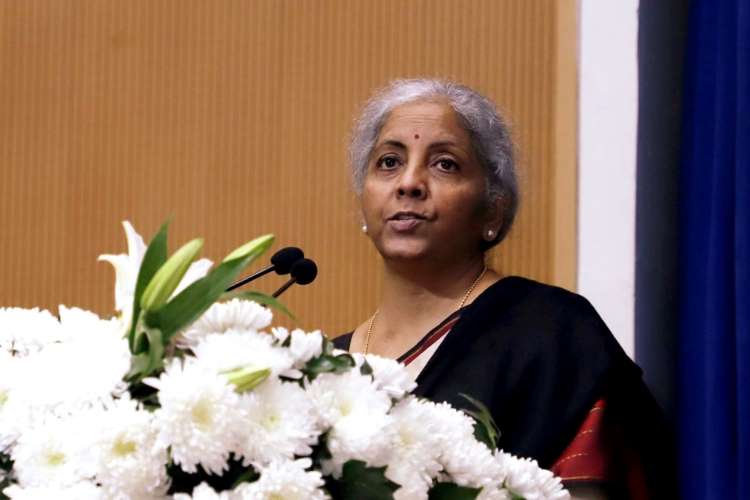
Finance minister Nirmala Sitharaman will present Budget 2022 amid the third wave of Covid-19 and elections to five key state assemblies. This will be Sitharaman’s fourth and the Narendra Modi government’s 10th Budget. While collating the numbers for the Budget, finance ministry officials would have confronted many challenges like fragile economic recovery, slack demand, dismal job situation, rising inflation and the upcoming UP elections. The predominantly rural state, also the most populous in India, will be crucial to BJP prospects in the 2024 general elections. Apart from elections, the other major factor will be the third wave of Covid-19 that threatens to disrupt the economy.
The nation-wide and regional lockdowns announced to curb the spread of Covid-19 triggered an economic crisis, slowing down all sectors of the economy and affecting macroeconomic variables. Financial year 2020-21 saw the Indian economy contracting 7.3%, retail inflation climbing to a six-month high of 5.59%, industrial growth sliding to a nine-month low of 1.4% and the unemployment rate touching a four-month high of 7.91% in December 2021. These numbers seriously upset the fiscal arithmetic and have heavily dented the scope for populist announcements and subsidies in the future.
READ I Spectre of inflation comes back to haunt Indian economy
Covid impact on economy
The pandemic has also affected social development and community capital as reflected in various indicators reported by prominent international organisations. As per the latest available data, India ranks 139 out of 149 countries in the Happiness Index, 62 out of 74 emerging economies in inclusive development index, 116 out of 174 countries in the human capital index, 131 among 189 countries in human development index, 48 in the list of top 50 countries in global innovation index and 129 among 158 countries in inequality index.
These numbers are alarming and call for the immediate attention of policymakers. Therefore, it is expected that the government will make some serious policy interventions in the social sector. In Budget 2021, the government attempted to address these social issues through the ‘six pillars of development’ — health and wellbeing, infrastructure, inclusive development, development of human capital, research and development, minimum government and maximum governance.
READ I Budget 2022: India should spend its way out of post-Covid economic crisis
Budget 2022 and social sector
As the country is facing a once-in-a-lifetime health crisis, fiscal support and policy intervention are required for the healthcare sector. In the previous budget, the budgetary allocation for health was a whopping Rs 2.84 lakh crore which was 137% higher than the outlay in the previous year. Out of this, Rs 35,000 crore was earmarked for Covid-19 vaccination.
Bringing people out of the fear of being infected by the virus is equally important for the speedy recovery of the tourism and hospitality sectors. The revival of these sectors will bring employment for millions who lost their jobs during the pandemic crisis. Hope Budget 2022 will give adequate fiscal support to the healthcare sector.
The student community and educational institutions, pivotal for human capital, are deeply affected by the pandemic. Investment and fiscal stimulus in the education sector are required on an urgent basis, that too when the government has adopted the National Education Policy. The spending on education has remained stagnant over a long period. The Economic Survey 2020-21 reported that spending on education remained 2.8% of the GDP in 2014-19 and increased to 3-3.5% in 2019-21.
Ideally, this ratio should be 6% of the GDP. In the previous budget, the fund allocation for the ministry of education was cut to Rs 93,223 crore from Rs 99,311 crore. The fund for the department of school education was reduced to Rs 54,873 crore from Rs 59,845 crore in the previous budget. Same is the case with the department of higher education, where the allocation was cut to Rs 38,350 crore from Rs 39,466 crore.
Budget 2022 is expected to contain a slew of populist schemes and subsidies appealing to the rural population in view of the elections in Punjab, Goa, Manipur, Uttarakhand and UP. Former finance minister late Arun Jaitley presented Budget 2018 just 10 days ahead of UP’s first phase assemble election in 2017. In his budget speech, he said, “My overall approach while preparing this budget has been to spend more in rural areas, infrastructure and poverty alleviation and yet maintain the best standards of fiscal prudence.” He divided the budget proposal into 10 themes, out of which at least four was aimed at wooing the voters in poll-bound states.
India will remain predominantly rural for the next 30 years, according to the United Nations’ World Urbanisation Prospects report. Around 800 million households belong to rural India, whose purchasing behaviour is usually linked to farm output. As per the latest available data of the Consumer Expenditure Survey (CES), the average monthly per capita consumption expenditure (MPCE) is Rs 1,430 which is about 84% lower than the urban MPCE. The consumption expenditure of almost 70% of the rural population is below the MPCE.
It would not be a surprise if Nirmala Sitharaman followed the footsteps of Arun Jaitley. But that will not be enough unless the FM succeeds in giving a few more direct benefits, schemes and subsidies to farmers and daily wage workers. The task at hand for Sitharaman is a tough one — offering populistic measure without upsetting the fiscal math. Will Budget 2022 bring some relief to the middle-class taxpayer through relaxation in personal income tax rates despite its limited appeal to the rural voters? We need to wait and watch for the finance minister’s speech on February 1.
(Shashank Vikram Pratap Singh is Assistant Professor, Shri Ram College of Commerce, University of Delhi.)
